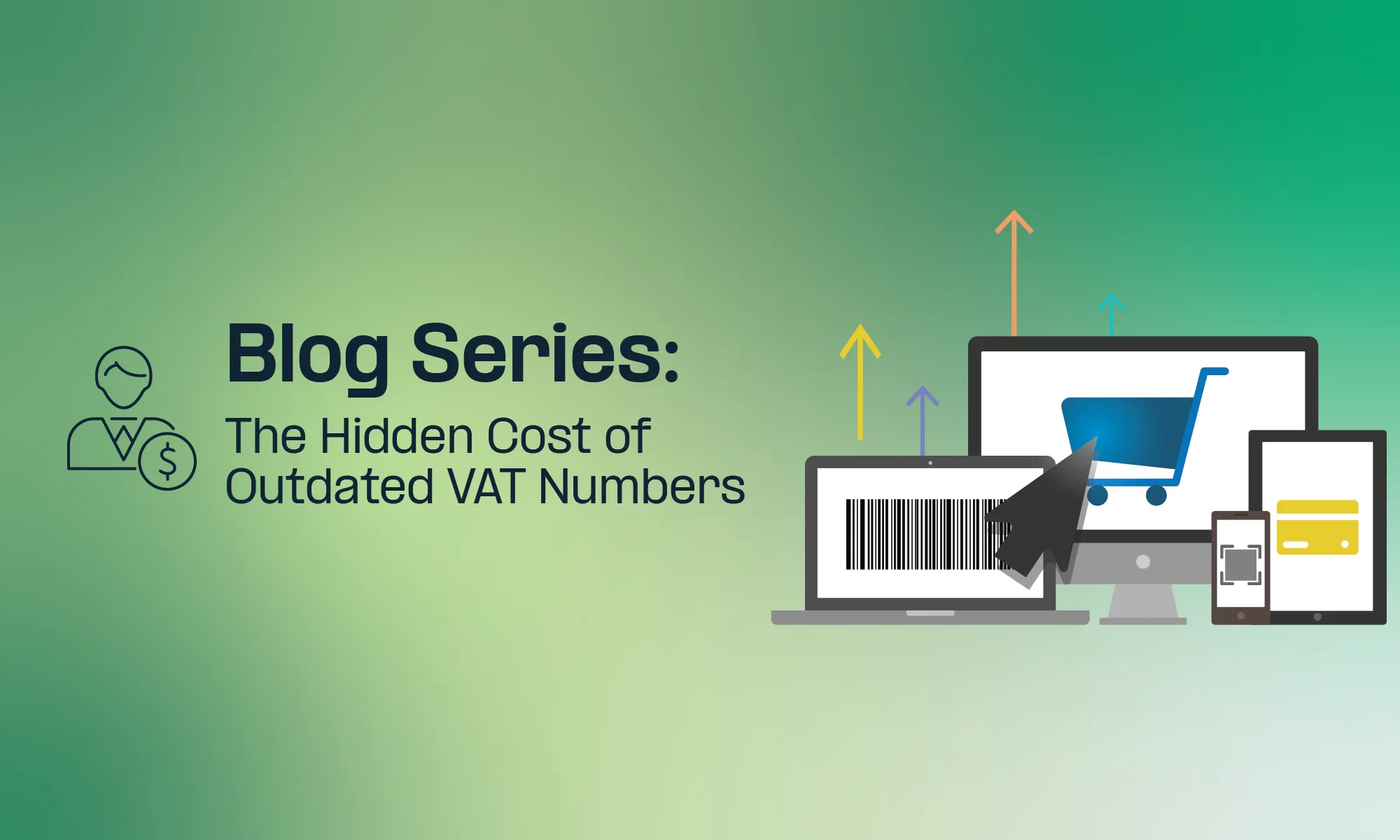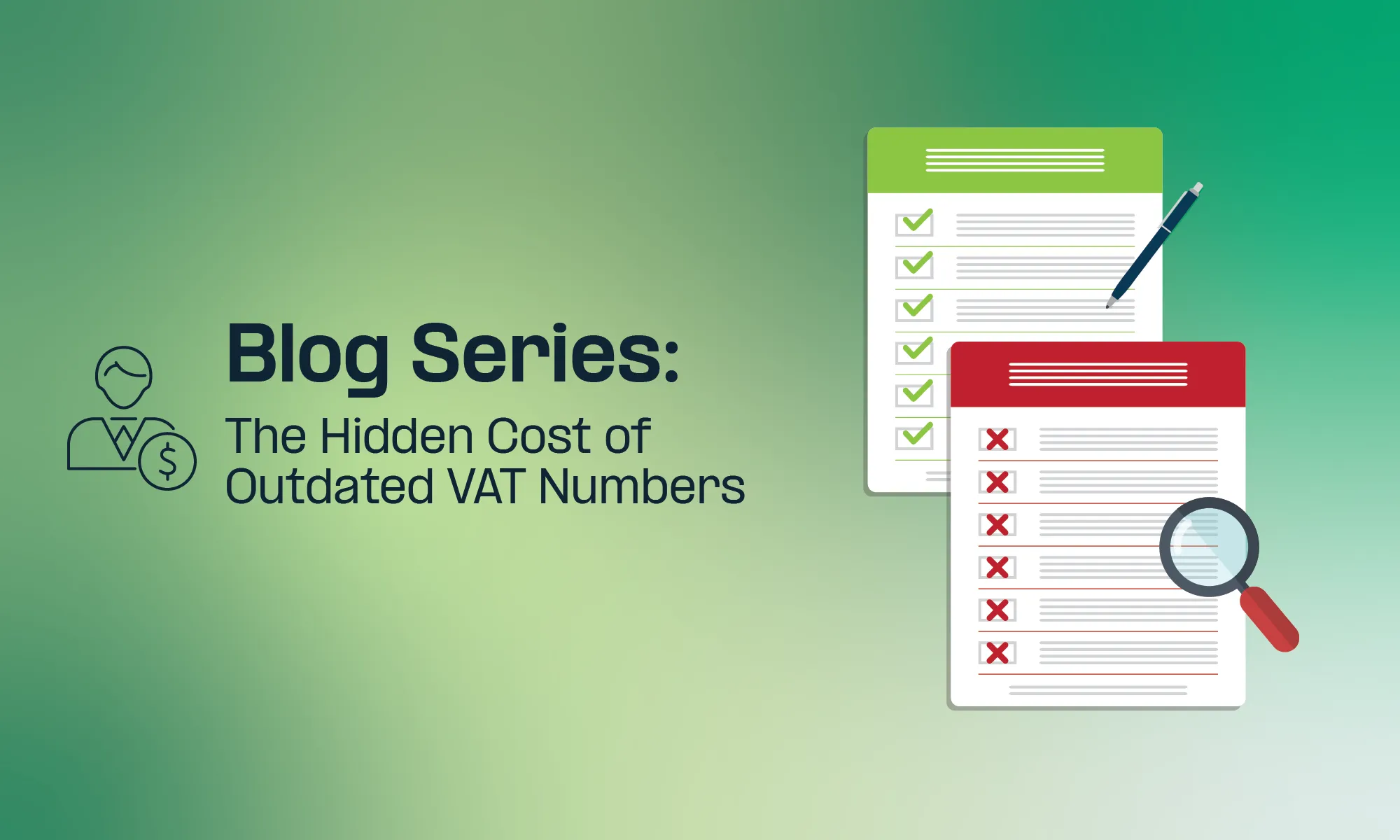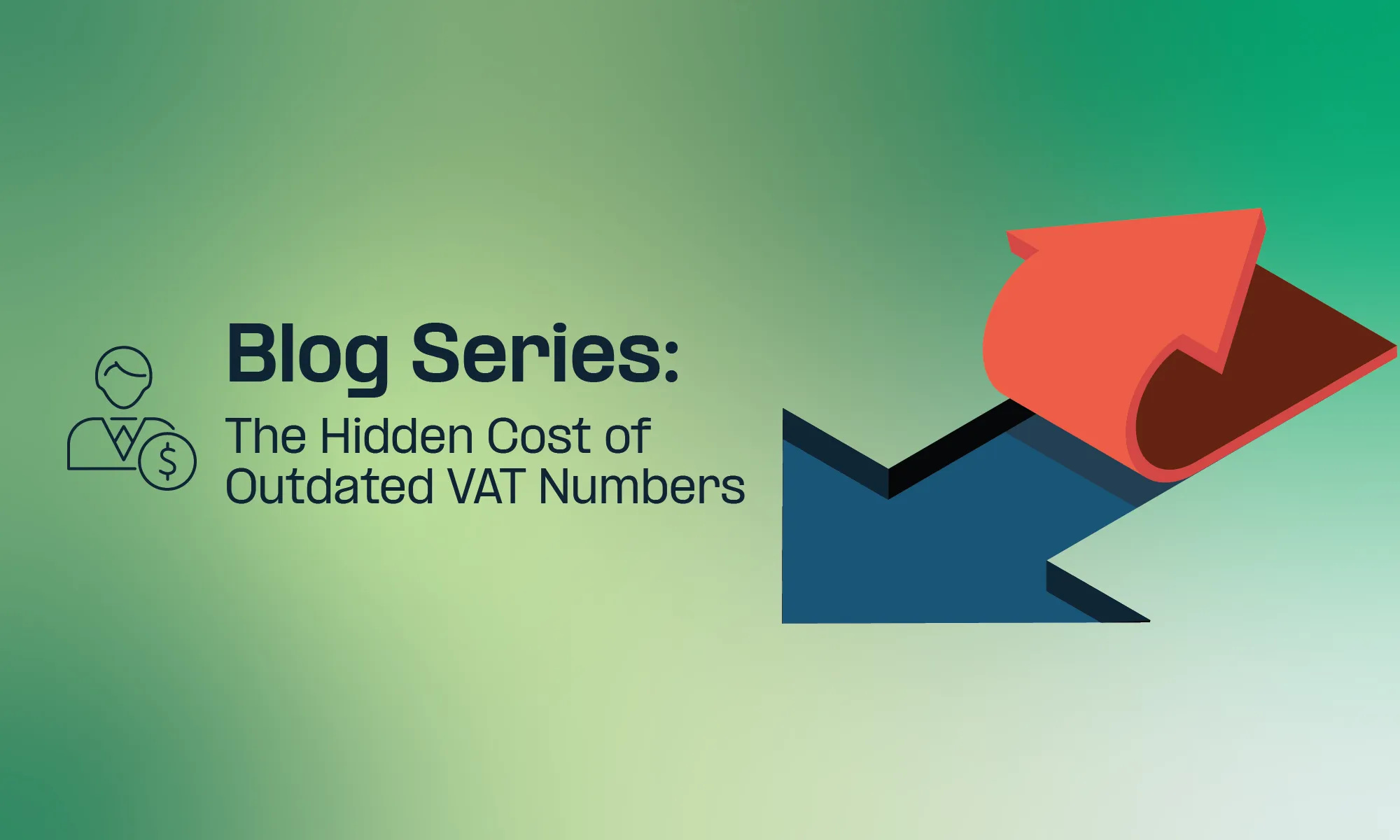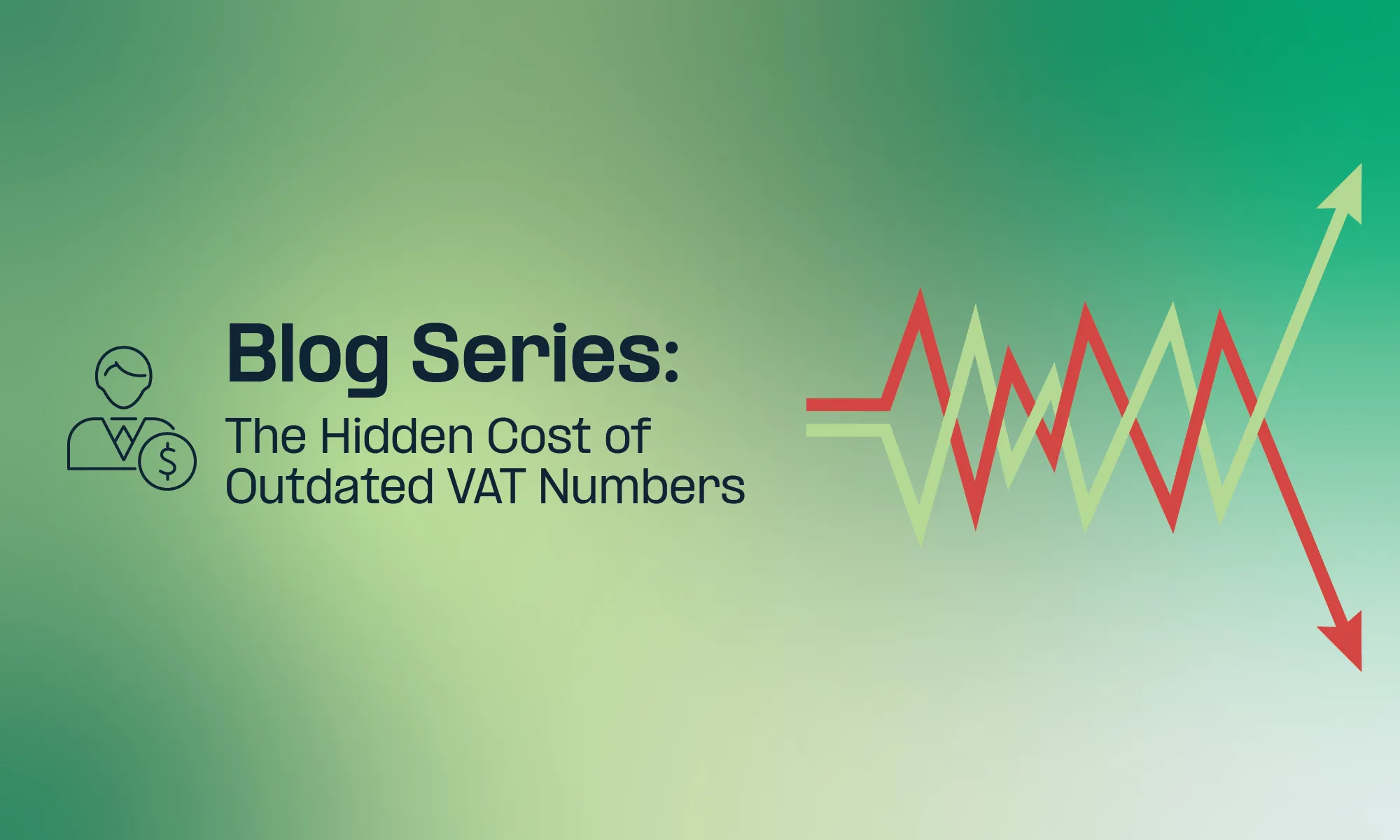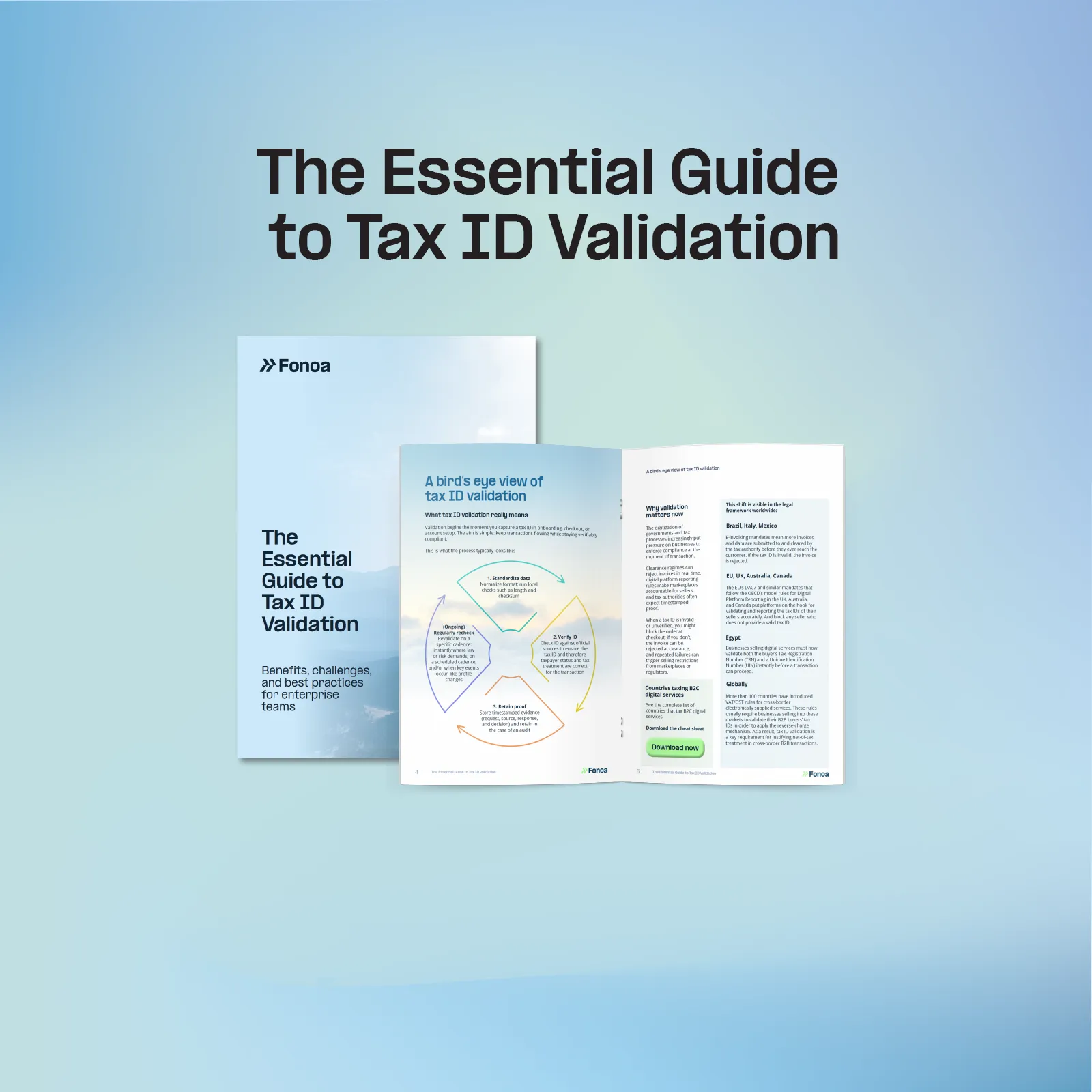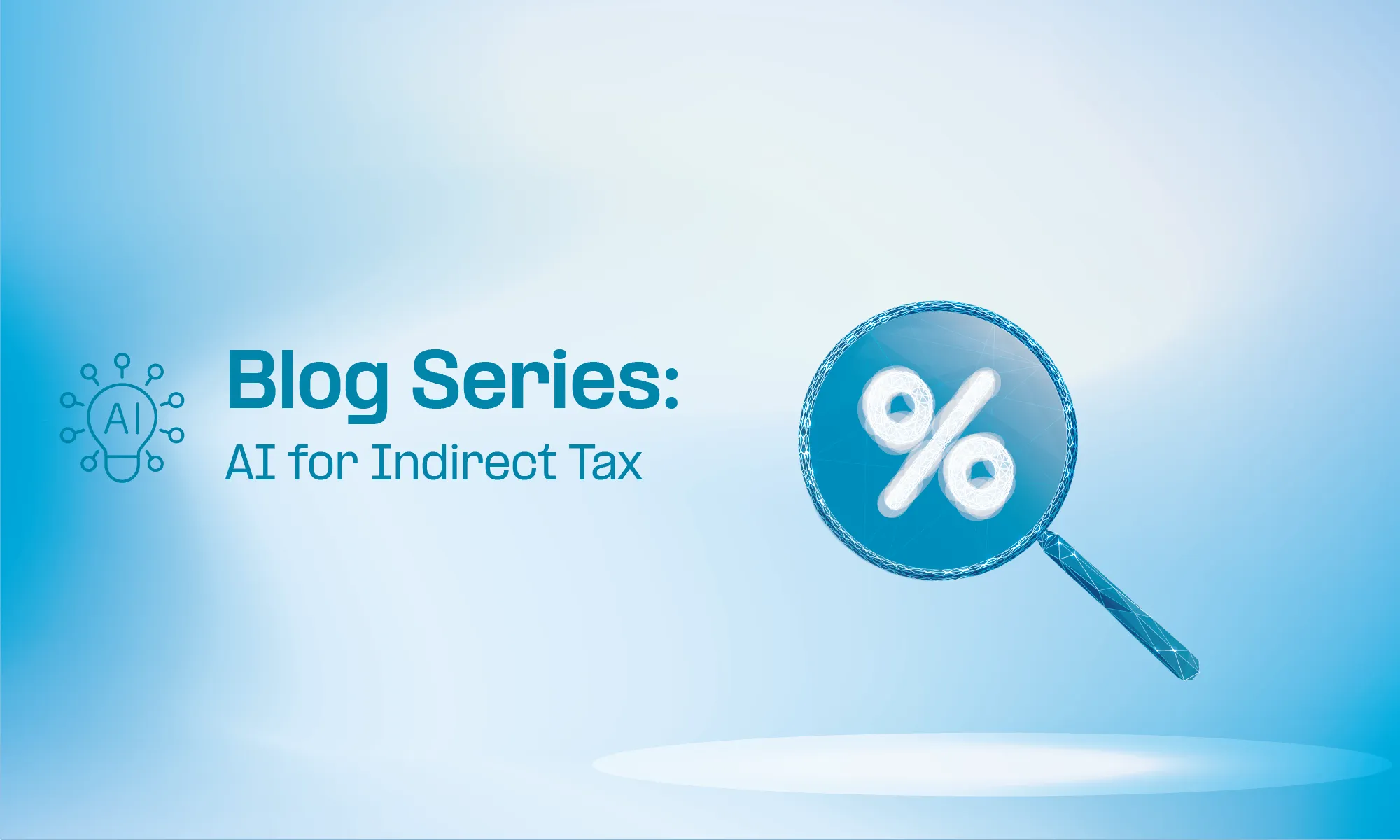In this post (The final part of our series on validating tax IDs), we explore the practical side of validating tax IDs: best practices, tools to validate, and an action plan to help you get started. We’ll also wrap up the entire series with final thoughts in case you haven’t read the entire series.
8 best practices for managing tax IDs
To address the challenges discussed, companies should adopt a series of best practices, leveraging automation wherever possible. Below are recommendations and tools for effective indirect tax number validation:
1. Master data clenup
Before moving to automation, many companies start with a one-off clean-up of their customer and supplier master data. This means exporting the entire dataset, validating every tax ID in bulk, and correcting errors, duplicates, or outdated records. A clean baseline ensures that future automated checks start from accurate, reliable information.
2. Validate at onboarding
The moment a new customer or supplier is added, validate their tax ID. Don’t wait until the first transaction is already done.
For suppliers, confirm their VAT/GST number before you start paying their invoices (protecting your input tax claims). For customers, validate any provided VAT/GST number before applying zero-tax or tax-exempt treatment. This initial check filters out obvious invalid IDs (typos, falsified numbers) upfront.
For example, Twilio requires customers to enter a VAT/GST ID in their billing info, and that triggers a validation check immediately. Onboarding validation can often be done via API calls to government systems (like VIES for EU, or national databases for others) or via third-party services.
3. Use format checks with live checks
Basic format validation (ensuring the ID has the correct length and pattern) is a helpful first step but not sufficient. Many tax IDs can pass a format check yet be unissued or canceled.
Best practice is to combine format validation (to catch input errors instantly) with live database validation for authenticity. For instance, an EU VAT might look correct as “GB123456789” but only a VIES lookup will tell if it’s an active registration. Modern tools often do a two-stage: local format algorithms, then call the official service. This yields enhanced accuracy and reduces false positives.
Fonoa even provides sub-second latency for real-time data validation which is critical for many companies’ checkout processes, where speed is of the essence.
4. Retain evidence of validation
Whenever you validate a tax number, log the result (valid/invalid) and the date, and if possible keep a reference (like a validation response ID or screenshot). As the EU Commission advises, “it is recommended that you keep track of your validation in case of tax control.” This can be achieved by storing a timestamp in the customer master data or maintaining an audit trail table. In an audit, being able to show that on the invoice date the customer’s VAT number was validated can absolve you from certain liabilities.
Some validation services even provide downloadable certificates or IDs for each check (VIES allows a downloadable confirmation for your own VAT number inquiries). Use these features to build an evidence repository.
5. Periodic bulk re-validation
Set up a schedule (e.g., monthly or quarterly) to revalidate all active tax IDs in your system. As discussed, registrations change, and periodic checks will catch lapses. Many companies choose a cycle based on volume and risk. High-volume partner IDs might be checked monthly, lower volume perhaps quarterly. Recurly’s system automatically re-checks if 6 months have passed; you can choose your interval.
Bulk validation can often be automated via API or done by exporting your data and using batch validation tools. Automate alerts for any IDs that fail validation so you can follow up with the customer/supplier promptly (e.g., request a new number or update your records).
Expectations by tax authorities on re-validation are growing. In Estonia, the support for every new partnership begins with a VAT ID check, and recommends occasional re-checks thereafter. In Latvia, authorities recommend verifying at onboarding, before VAT return filing, and regularly for high-volume customers, highlighting how “best practices” are being advocated by governments.
6. Incorporate into invoice processes
If you’re issuing invoices (especially via an ERP or invoicing software), integrate a step that validates the tax ID at invoice creation time, particularly for cases that impact tax (like cross-border sales).
Some systems have built-in functionality or available add-ons (for instance, SAP and other ERPs have modules or scripts to call VIES or local checks). If an ID comes back invalid, the process can require a manual review before sending the invoice. This prevents sending non-compliant invoices to customers which would later need correction. It’s easier to fix an issue before the invoice is finalized.
In Slovakia, validation is legally required for every transaction, with suppliers obliged to use either the national portal or VIES. Non-compliance leads to VAT reassessment and sanctions. This is a strong illustration of “validation at every invoice” being not just best practice, but statutory law.
7. Handle exceptions gracefully
There will be scenarios where a tax ID can’t be validated in real time (e.g., the government service is down, or a new registration not yet updated in the database). Have a documented process for exceptions: perhaps allow the invoice but flag it, and try validation again later.
In the EU, for example, if VIES is down, you’re allowed to obtain other proof from the customer and try later. Your system could mark the transaction “validation pending” and resolve it in a few days. It’s important not to ignore these. Follow up until you get a definitive answer, because an unchecked exception is a compliance risk left open.
8. Educate and communicate
Inform your customers and suppliers that you will be validating tax IDs and why.
For customers, this can be part of the sign-up or checkout instructions: e.g., “Please enter your VAT/GST number. We will verify it with the tax authority to determine tax applicability.” This manages expectations and also deters anyone trying to game the system.
For suppliers, you might include in your vendor onboarding packet: “Ensure the VAT/GST number you give us is correct and active; we will verify it and any issues could delay payments.” This encourages counterparties to keep their info up to date with you.
For example, The Czech Republic requires businesses to know their partner’s VAT status on the date of supply. Recipients claiming VAT input deductions must also validate suppliers’ VAT IDs to avoid unjustified claims. Automated data connections with the Czech VAT Register is therefore increasingly used by businesses.
Automated validation tools
Manually checking tax numbers on various government websites is not feasible at scale. Thankfully, a number of solutions exist:
Fonoa Lookup
Fonoa is a tax technology provider focused on enterprise tax automation. Fonoa’s Lookup solution allows validating tax IDs in over 100 countries via one API.
It is currently the only technology provider that is able to provide global coverage and direct government database validation. It goes beyond EU VIES to include GST, state taxes, and even some direct tax TINs.
Fonoa’s tools are real-time and can do bulk checks quickly, integrating into enterprise systems. They highlight use cases like marketplaces verifying seller VAT/GST instantly during onboarding. Such a tool is valuable for companies operating in many jurisdictions, because it abstracts the differences in each country’s validation process (some have APIs, some require captchas on websites, etc.).
Fonoa also provides a search-by-name for some jurisdictions to find a tax ID if you have other details, which helps in cleaning data when the ID is missing.
VIES and government APIs
For the EU, the VIES service is free and accessible via API. Many businesses with development capability integrate directly with VIES for EU VAT checks. Countries like Australia (ABR Lookup), India (GSTIN verification), and others have publicly accessible lookup tools or APIs.
If budget is a concern, a company can build their own scripts to query these services. However, these databases are often very incomplete and offer no customer support. VIES, for instance, can miss up to 40% of valid VAT IDs in certain countries, as VIES doesn’t cover domestic VAT registrations.
Maintaining dozens of integrations and handling various data formats is a challenge. That’s why providers like Fonoa do it at scale on behalf of their customers. What’s more, the additional functionality provided by services providers like Fonoa goes way beyond a ‘simple’ database check.
Still, for a company heavily concentrated in one or a few countries, using government-provided tools directly can be a starting point.
ERP and billing system add-ons
Check if your existing software has modules for tax ID validation. Many cloud billing platforms have started adding tax ID validation features, although limited to format checks. If you use an ERP like SAP or Oracle, there may be extensions or partner solutions that bring in tax validation. Using these can make the process more seamless but often require custom integration work as no true standard solutions exist at this point.
Custom in-house solutions
Large tech companies sometimes build their own internal tax ID verification systems (as interim solutions). Uber’s tax tech team initially did this to validate driver and restaurant partner tax information. If going this route, be prepared for significant maintenance. Tracking changes in government systems and adding new countries is ongoing work. Often, companies start in-house but later migrate to a vendor solution once one matures.
OCR and data cleaning tools
One aspect of validation is capturing the data correctly. Companies dealing with paper invoices or scanned certificates might use OCR (optical character recognition) to get tax IDs, then validate them. Ensuring clean input (e.g., no O vs 0 mistakes) is part of the challenge. Some data quality tools can detect if a number doesn’t match the expected pattern for a country and prompt correction. Implementing validation at point of data entry (like web forms that immediately check the database) is ideal to avoid “garbage in”.
Cost-benefit and efficiency
Automating tax ID validation yields a strong ROI in avoiding compliance issues and process efficiency. As one Tax Technology director humorously put it after listing the many reasons to validate: the alternatives are dedicating a large team to do it manually or ignoring it and paying the price later—neither is tenable. Automation is the only scalable choice. By using available tools, even lean teams can manage validations for millions of transactions.
It’s also important to remember to configure the tools correctly. For example, if using VIES directly, know that it only checks EU VAT for cross-border validity, and some VAT numbers might appear “invalid” if the business isn’t registered for EU intra-community trade (VIES can return a false negative in such cases). So having local knowledge or a smart service that handles such nuances (e.g., telling you the number is format-valid but not active for cross-border) is useful.
Finally, test your processes. Do occasional audits: pick a sample of transactions and double-check that the validation logs exist and the numbers were indeed valid at the time. This can catch any integration issues (like if an API was down and not rechecked).
By implementing these best practices and utilizing modern validation tools, companies can largely immunize themselves from the risks of invalid tax IDs. The goal state is a system where tax ID checks happen quietly in the background, only alerting when there’s a problem, much like a spell-checker underlines a typo. This frees up the tax and finance professionals to focus on higher-level strategy, knowing that a key compliance detail is being handled consistently and accurately by their systems.
Action plan
Finance and tax leaders should review their current processes for handling VAT/GST IDs. Identify gaps (Are we validating at onboarding? Do we re-check existing records? Do we have any automation, or is it ad-hoc?).
Then, evaluate solutions, whether it’s building on existing systems or integrating a specialized tool. Start with critical regions (e.g., EU VAT via VIES, GST for APAC, etc.) and then broaden out. Also ensure your team is trained on the importance of this and knows the procedure when a validation fails (e.g., engage sales or vendor management to get correct info).
By following the guidelines and best practices outlined in this report, companies can significantly reduce compliance risk and improve operational efficiency.
Revalidating indirect tax numbers is one of those behind-the-scenes tasks that, done well, yields outsized benefits: fewer headaches for your finance team, greater trust with your business partners, and a strong compliance record with authorities globally. In the digital tax era, an ounce of prevention (via tax ID validation) is worth a pound of cure. Consider it an investment into the infrastructure of your business’s success.
Final thoughts
Revalidating indirect tax numbers for customers and suppliers is no longer an optional housekeeping task. It’s a mission-critical component of compliance and operational excellence for global e-commerce and SaaS companies. The landscape of indirect tax is increasingly digital and data-driven: tax authorities expect businesses to “get it right” in real time, and are providing both the tools and the mandates to ensure that happens.
In summary, the importance of keeping VAT, GST, and other tax IDs valid and up-to-date cannot be overstated:
- It protects your right to reclaim taxes and avoid unwarranted tax charges.
- It keeps your e-invoicing and reporting processes running smoothly, without costly disruptions.
- It adapts to the reality that business statuses change. Only through continuous validation can you keep your records accurate.
- It underpins clean master data, which is the lifeblood of efficient finance operations and audit readiness.
- It positions your company for the future of tax compliance, where real-time data verification is standard.
- It aligns you with the practices of leading digital companies who have turned tax ID validation into a competitive strength rather than a weakness.
Companies that invest in automated tax ID validation and robust data management will find that compliance becomes a more streamlined part of doing business, rather than a constant firefighting effort. They will also be able to expand globally with greater confidence, knowing they can meet local tax requirements around customer/vendor identification at scale.
On the other hand, companies that neglect this area risk penalties, transaction failures, unhappy customers/suppliers, and a backlog of issues that could have been prevented. As one tax technology expert quipped, after enumerating all the reasons to validate: by that point, “I’m not sure you will need any convincing.” The case makes itself.


